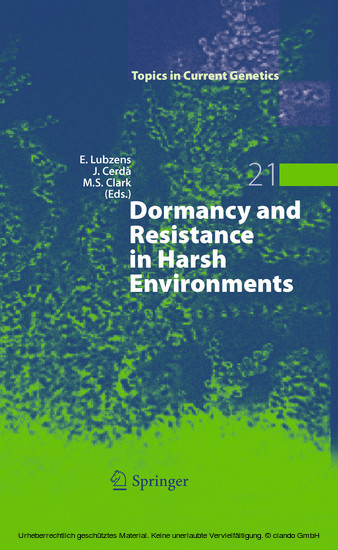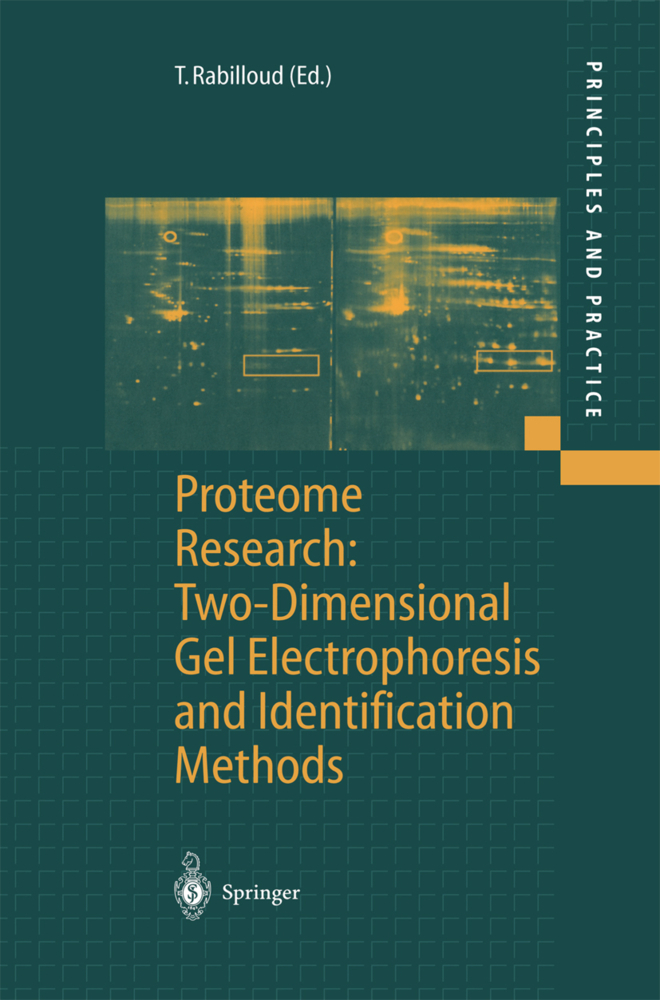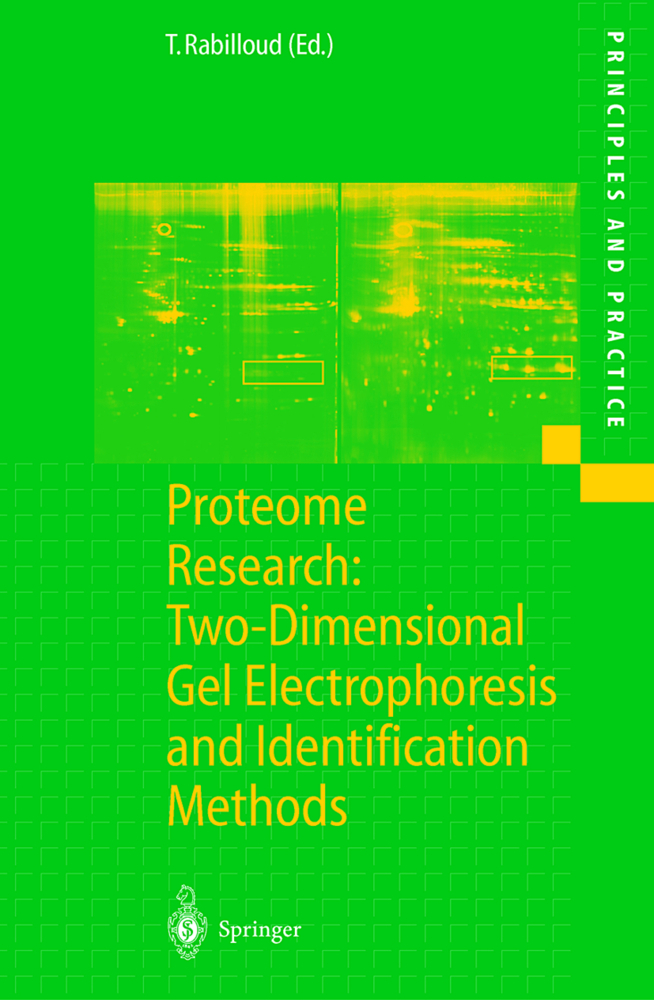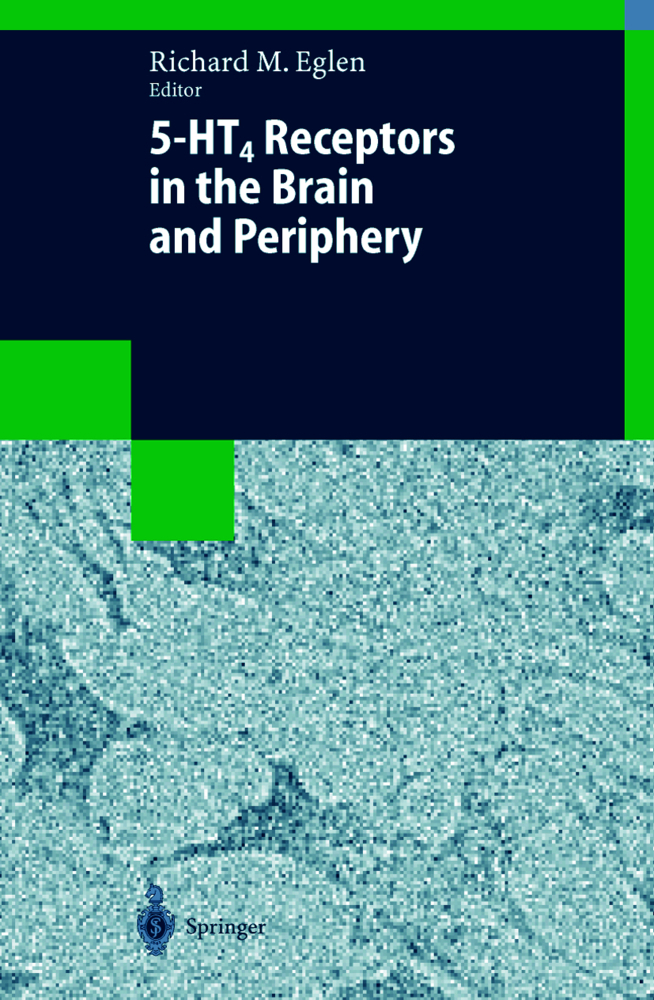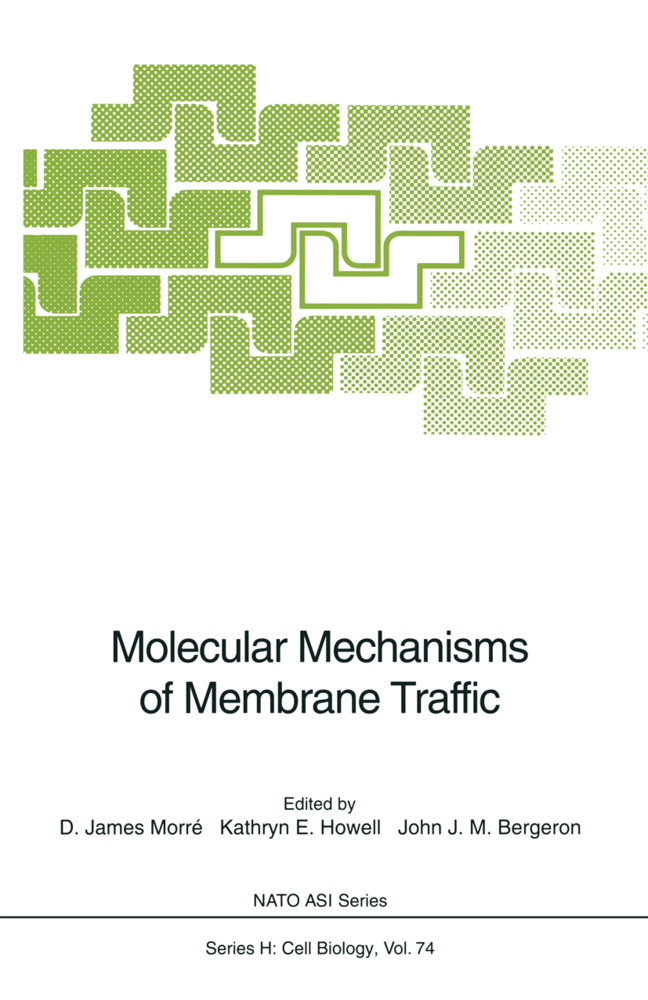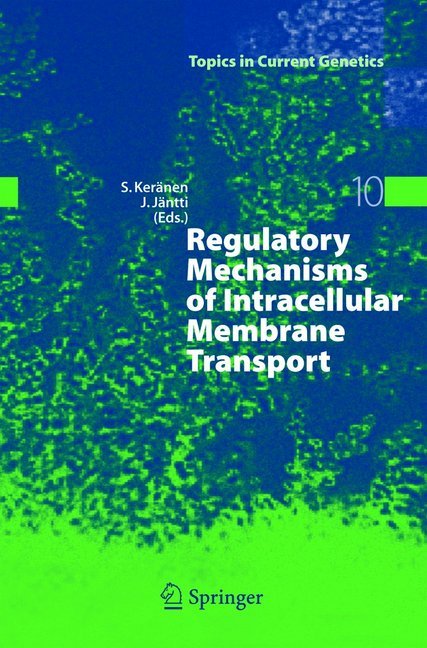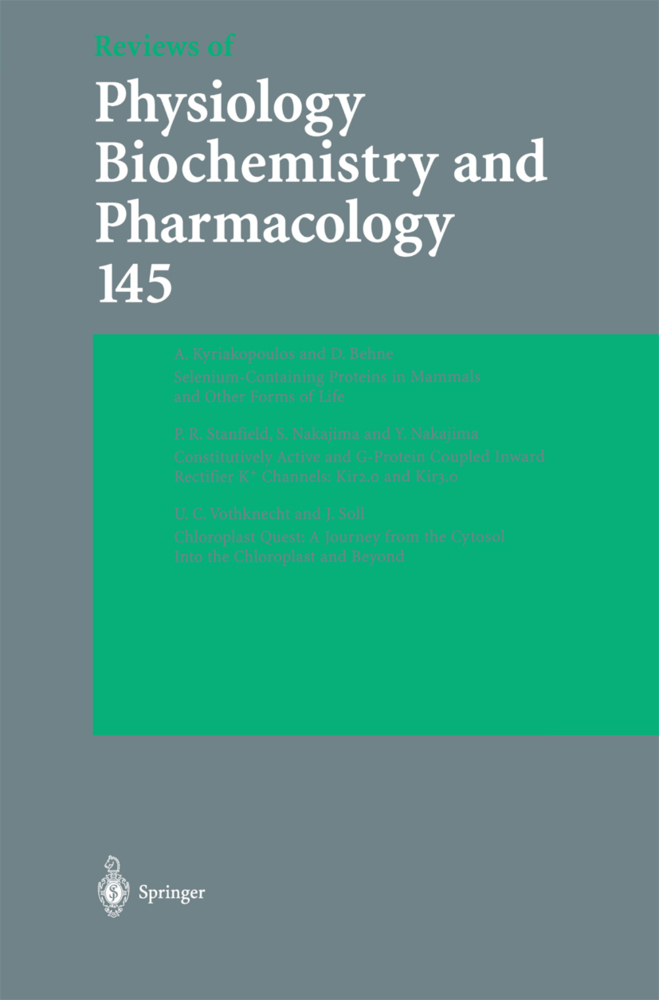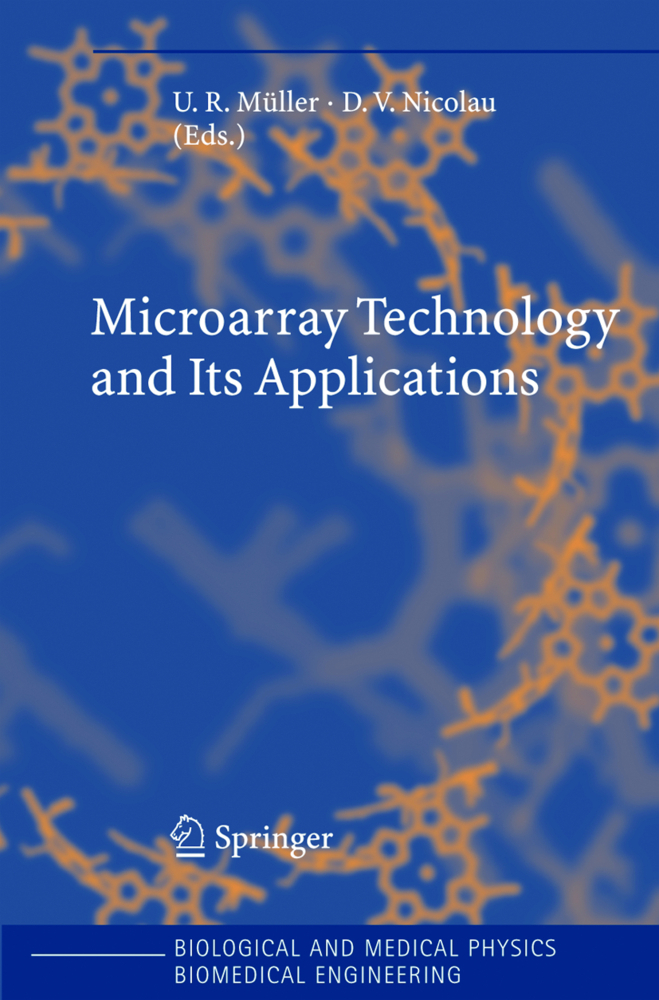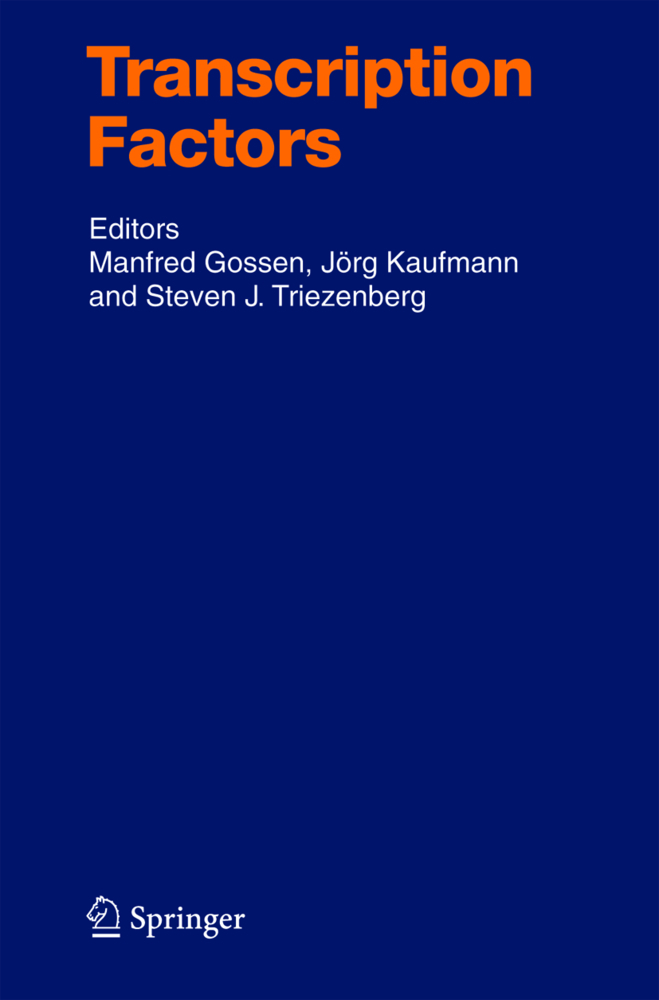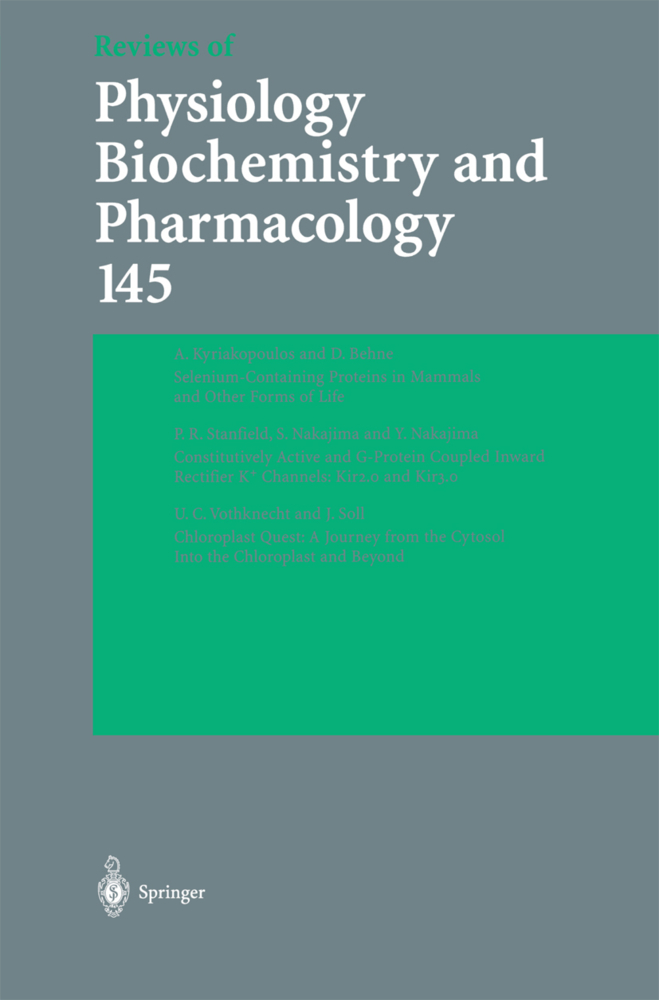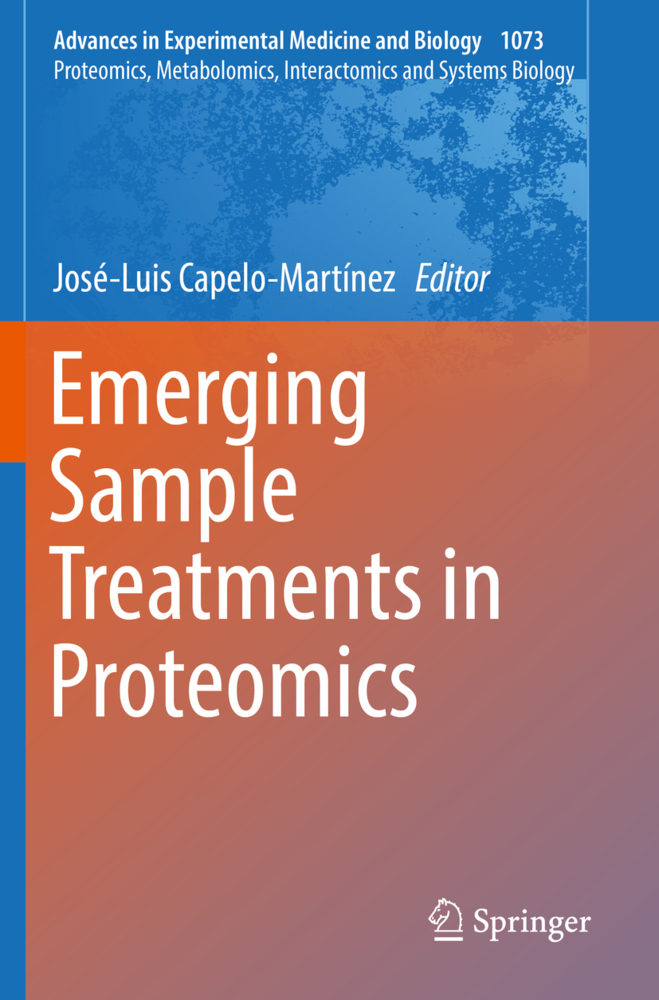Dormancy and Resistance in Harsh Environments
Many organisms have evolved the ability to enter into and revive from a dormant state. They can survive for long periods in this state (often even months to years), yet can become responsive again within minutes or hours. This is often, but not necessarily, associated with desiccation. Preserving one's body and reviving it in future generations is a dream of mankind. To date, however, we have failed to learn how cells, tissues or entire organisms can be made dormant or be effectively revived at ambient temperatures. In this book studies on organisms, ranging from aquatic cyanobacteria that produce akinetes to hibernating mammals, are presented, and reveal common but also divergent physiological and molecular pathways for surviving in a dormant form or for tolerating harsh environments. Attempting to learn the functions associated with dormancy and how they are regulated is one of the great future challenges. Its relevance to the preservation of cells and tissues is one of the key concerns of this book.
1;Contents;8 2;Contributors;10 3;Chapter 1: Introduction;14 3.1;1.1 Dormancy ;14 3.2;References;17 4;Chapter 2: Akinetes: Dormant Cells of Cyanobacteria;18 4.1;2.1 Introduction;14 4.2;2.2 Structure, Composition, and Metabolism of Akinetes;20 4.3;2.3 Factors that Influence Akinete Differentiation;22 4.4;2.4 Factors Influencing Akinete Germination;25 4.5;2.5 The Germination Process;27 4.6;2.6 Ecological Functions of Akinetes;28 4.7;2.7 Genes Involved in Akinete Differentiation;29 4.8;2.8 Similarity of Akinetes to Dormant Forms of Other Prokaryotes;32 4.9;2.9 Conclusions and Future Prospects;34 4.10;References;35 5;Chapter 3: Saccharomyces cerevisiae Spore Germination;41 5.1;3.1 Saccharomyces cerevisiae as a Model Organism for Dormancy;42 5.2;3.2 Yeast Sporulation;42 5.3;3.3 The Dormant Spore;43 5.4;3.4 Germination;44 5.4.1;3.4.1 Nutritional Requirements for Germination;44 5.4.2;3.4.2 Germination: The Process;45 5.4.3;3.4.3 Macromolecular Synthesis and Degradation;46 5.4.4;3.4.4 Trehalose Breakdown;46 5.4.5;3.4.5 Global Changes in Gene Expression During Germination;47 5.4.5.1;3.4.5.1 Two Stages of Germination Prior to the First Mitotic Cell Cycle;47 5.4.5.2;3.4.5.2 Germination and the General Response of Yeast Cells to Glucose;49 5.4.6;3.4.6 Conjugation Between Germinating Spores of Opposite Mating Type;49 5.4.7;3.4.7 Specific Proteins Required for Germination;50 5.4.8;3.4.8 Future Challenges;51 5.5;References;51 6;Chapter 4: Dormancy in Plant Seeds;54 6.1;4.1 Introduction;55 6.1.1;4.1.1 Embryo-Endosperm Interaction as a Mechanistic Model for Germination;56 6.2;4.2 Seed Dormancy Research: An Update;57 6.2.1;4.2.1 Global Analysis;57 6.2.1.1;4.2.1.1 Similarities and Differences between Physiological States;58 6.2.1.2;4.2.1.2 Genes Associated with Different States;59 6.2.1.3;4.2.1.3 The Hormone Balance and Regulation of Dormancy;60 6.2.1.4;4.2.1.4 Exposure to Dormancy Releasing Environmental Factors;61 6.2.1.5;4.2.1.5 Different Seed Tissues and Sensitivities;62 6.2.2;4.2.2 Specific Analyses: Key Genes and Processes Related to the Hormonal Regulation of Dormancy, After-Ripening and Germination;63 6.2.2.1;4.2.2.1 ABA: A Positive Regulator of Dormancy Induction and Maintenance, and a Negative Regulator of Germination;63 6.2.2.2;4.2.2.2 Gibberellins Release Coat Dormancy, Promote Germination and Counteract ABA Effects;64 6.2.2.3;4.2.2.3 Identification of Dormancy-Specific Genes and Other Key Genes that Control Germination Timing;66 6.2.2.4;4.2.2.4 Control of Germination by the Seed Coat: Testa Mutant Studies;67 6.2.2.5;4.2.2.5 Control of Germination by the Endosperm: Endosperm Dormancy and Endosperm Weakening;68 6.3;4.3 Dormancy and Harsh Environments;70 6.3.1;4.3.1 Seed Dormancy and Tolerance in the Dry State;70 6.3.2;4.3.2 Stress Tolerance of Dormant Seeds in the Hydrated State;71 6.4;4.4 Future Prospects;73 6.5;References;73 7;Chapter 5: Bud Dormancy in Perennial Plants: A Mechanism for Survival;79 7.1;5.1 Introduction;79 7.1.1;5.1.1 Bud Phenology in Model Perennials;81 7.1.1.1;5.1.1.1 Woody Perennials;81 7.1.1.2;5.1.1.2 Herbaceous Perennials;83 7.2;5.2 Environmental Regulation;84 7.2.1;5.2.1 Light;84 7.2.2;5.2.2 Temperature;88 7.2.2.1;5.2.2.1 Cold-Hardening/Cold-Acclimation;88 7.2.2.2;5.2.2.2 Vernalization;89 7.3;5.3 Genetic/Physiological Model(s) for Regulation of Dormancy Transitions;90 7.3.1;5.3.1 Hormones;92 7.3.2;5.3.2 Sugar;93 7.4;5.4 Conclusions;94 7.5;References;95 8;Chapter 6: LEA Proteins: Versatility of Form and Function;101 8.1;6.1 Introduction;101 8.1.1;6.1.1 Anhydrobiosis and Desiccation Tolerance;101 8.1.2;6.1.2 Mechanisms of Desiccation Tolerance;102 8.1.3;6.1.3 Unstructured, Highly Hydrophilic Proteins;103 8.2;6.2 LEA Protein Function;105 8.2.1;6.2.1 Protein Protection;105 8.2.2;6.2.2 Membrane Protection;109 8.2.3;6.2.3 The Glassy State;111 8.3;6.3 The Versatility of LEA Proteins;112 8.4;References;114 9;Chapter 7: A Role for Molecular Studies in Unveiling the Pathways for Formation of Rotifer Resting Eggs and Their
Lubzens, Esther
Cerda, Joan
Clark, Melody
| ISBN | 9783642124228 |
|---|---|
| Artikelnummer | 9783642124228 |
| Medientyp | E-Book - PDF |
| Auflage | 2. Aufl. |
| Copyrightjahr | 2010 |
| Verlag | Springer-Verlag |
| Umfang | 284 Seiten |
| Sprache | Englisch |
| Kopierschutz | Digitales Wasserzeichen |

